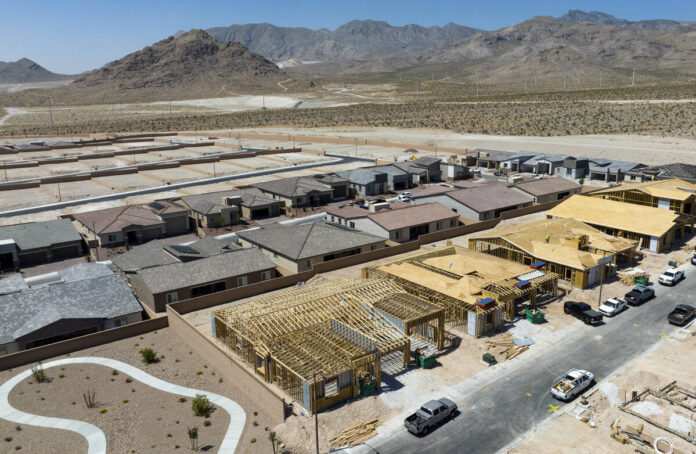Soaring Home Prices Amid Declining Sales in Southern Nevada
Builders in Southern Nevada are experiencing a paradox: record-high home prices paired with plummeting sales figures. In March, builders recorded only 810 net sales—representing newly signed contracts minus cancellations—a staggering 39 percent decline compared to the same month last year, according to a recent report from Las Vegas-based Home Builders Research.
Construction Permits on the Decline
In addition to falling sales, builders also obtained 1,001 new home permits in March, marking a 25 percent drop from the previous year. These figures suggest a significant slowdown in construction plans as the housing market grapples with economic uncertainties and escalating costs.
Median Prices at All-Time High
Despite the falling sales figures, builders achieved a median closing price of $530,000 for homes sold in March, reflecting a 9.6 percent increase from the previous year. This figure represents the highest median sales price ever reported by Home Builders Research. However, this uptick in price comes amid a backdrop of declining buyer interest.
The Time Lag in Home Sales
After buyers sign a contract with builders, they often wait several months before the house is completed and the sale finalizes. This lag time can exacerbate the effects of economic fluctuations on the housing market. As a result, data points to a shrinking pool of buyers who can afford increasingly expensive homes, particularly given the backdrop of rising mortgage rates and broader economic instability.
Mixed Signals in Sales Data
Andrew Smith, President of Home Builders Research, commented that while the drop in net sales “seems rather drastic,” the average weekly sales rates per community remain robust. He noted that builders are cautiously increasing their base asking prices. Interestingly, despite declining sales totals, the overall conversion rate of buyer traffic into sales remains comparable to last year’s figures.
National Trends Contrast with Local Struggles
Nationally, the situation presents a different picture. Builders across the United States have reported a 6 percent increase in sales amid falling prices, with the median sales price of new single-family homes dropping by 7.5 percent. Yet, the pace of construction for new homes also fell, declining by 9.7 percent from the previous year. This dichotomy raises questions about the broader implications for the housing market.
Affordability Pressures on the Rise
Buddy Hughes, chairman of the National Association of Home Builders, highlighted that while demand still exists, the decline in housing starts signals intensifying affordability issues. High mortgage rates and rising construction costs are squeezing entry-level buyers out of the market. Hughes emphasized that these increased financial pressures are leading to a softening in demand for homes.
Challenges of the Spring Homebuying Season
This year’s spring homebuying season is shaping up to be “lackluster.” Record-high housing costs and ongoing economic uncertainty have made many potential buyers hesitant. According to recent reports from Redfin, the rising costs and market instability contribute to a slower pace of buying activity.
Resale Market Displays Mixed Performance
Interestingly, the resale market in Southern Nevada tells a different story. Even as prices climb, more homes sold in March compared to the previous year. Approximately 2,140 previously owned single-family homes changed hands, reflecting a nearly 3 percent increase in activity. These homes commanded a median price of $485,000, up more than 4 percent from last year.
Rising Inventory Signals Market Shifts
Despite the increase in resale home sales, a significant inventory of homes remains unsold. At the end of March, over 5,400 homes were on the market without offers—a stark 63 percent increase from the previous year. This growing inventory could signal a shift in the dynamics of the Southern Nevada housing market, as competition increases and prices continue to affect buyer behavior.
As this complex situation evolves, stakeholders in the housing market will need to navigate these shifting trends carefully.
